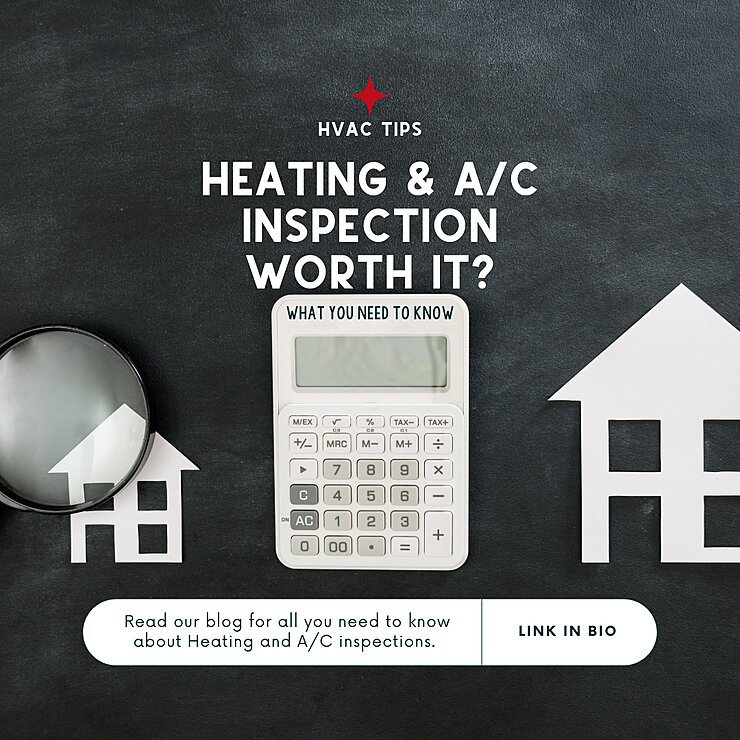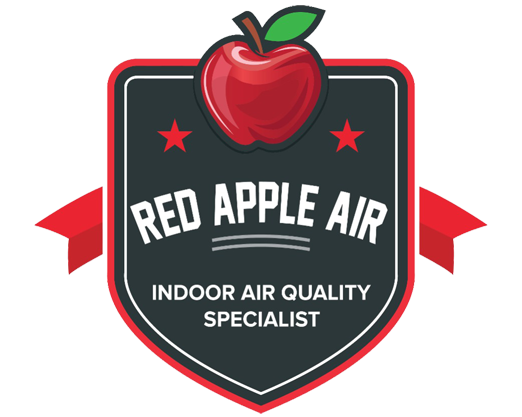Updated: May 28, 2021

Is a good idea or is it just another ploy to sell you things you don’t need?
What a great question. How about you read this article to completion and then you decide. After all, safety, energy savings and comfort is important to you right?
Trust me on this, it is.
Are Home Comfort inspections a good idea?
Yes of course. Especially if they are completed by a Certified Technician. In other words, someone who is properly trained and can actually perform the work themselves.
On the other hand if it’s done by a salesman that has never been out in the field then maybe not that good of an idea.
Here is the thing.
I find that most people call for service, or repairs once their equipment has broken down. Let’s say for example it’s the middle of winter, it is getting cold outside and now your heater won’t turn on.
Typically, we consider this an emergency repair and the main objective is to repair the unit ASAP.
But what we find is that most homeowners knew well in advance that the heaters were not properly working. And the homeowner understood they should have called sooner. Weeks maybe months sooner. Yet had a technician been called weeks before the homeowner could have made a much more relaxed decision to solve an existing problem.
Now I call it an existing problem because most homeowners are aware of the age or condition of their equipment. Such as in the case where a heater has been blowing cold air. Or an Air Conditioner that’s not cooling properly. Or a Water Heater that is slowly dripping water. A Heater that is getting louder and louder. Or flickering living room lights. Even that old Thermostat that you keep looking at on the wall is a clear indicator that maybe it’s time to have someone look, even if it is only a visual inspection. These are all signs something is about to go wrong.
As they say, an ounce of prevention is worth a pound of cure. Surely that has some meaning to it.
Still not convinced. Well then, here is a detailed list of all the items that should be visually inspected at least every few years followed by their reason.
Just a heads up.
Through the rest of this article you are going to find out a lot more than you ever thought you wanted to know about your Home’s systems. Yet in the end I promise you this information will provide you with all the basic information you need to know in order to make a good and well-informed decision. Making it clear as to what the next step should be for you and your family.
Let’s begin with a Heater inspection since it is the most important appliance that every home must have in working condition before buying or selling, per California State Law. Which by the way also happens to be the most dangerous appliance due to the Carbon Monoxide and other dangerous gases the appliance emits.
That being said. There are 3 styles of Heaters most commonly found in the South Bay and surrounding cities.
There are Wall Heaters single sided or double sided.
There are Floor Heaters also single sided or double sided.
A Furnace is a Heater with a blower fan. Furnaces typically have a ducting system that is used to distribute air evenly to the separate rooms of a home.
Common problems with Heaters are:
Furnace Age:
Age and corrosion go hand in hand. The older a heater is the more corrosive it gets. Corrosion typically leads to cracks on the metal of the heat exchanger.
Let me explain it differently.
All Heating systems work this way. A THERMOSTAT is turned up to heat the home.
The Thermostat then sends a message to the heating unit. Wall Heater, Floor Heater or Furnace whichever you may have. This signal turns on the fire on top of the burners just like any ordinary stove does except to an exponentially larger scale.
The main difference is that the burners/ fire is turned on inside of what is called a heat exchanger which is basically a metal box that encloses the fire. The function of the heat exchanger is to enclose the toxic and dangerous gases that fires create while at the same time it uses the Hot metal to radiate clean heat into the inside of a home. The hot metal then heats up the air on the outside of the heat exchanger while the toxic combustion gases on the inside are then exhausted through a chimney to the top of your home where it is vented as far as possible from your family.
Yes, it’s that dangerous.
Here is where the problems arise:
When the corrosion on the metal cracks. At that point the toxic gases, also known as Carbon Monoxide, get through the metal and into the home.
In a Furnace the problem can be caused by corrosion or by overheating.
I’ll explain.
Furnaces typically have a lot more heating potential than Floor or Wall Heaters. Typically 2, 3 or 4x the heating potential. This is due to a Furnaces ability to continuously blow cool air through the exterior of the heat exchanger. This air serves to keep the metal heat exchanger box cool enough so it does not overheat and crack. While wall and floor heaters do not have a fan to cool themselves which is why they can only handle small capacities.
As you can imagine the cool air that bounces off the heated metal box is no longer cool but not hot. The hot air is then moved through ducts into the rooms of the home they want to heat up.
The problem however arises when the blower does not have enough access to cool air. What we typically find is that a furnace needs a lot of air to cool itself and in most instances Furnaces without a high quantity of air will ruin themselves by overheating the metal which can crack the heat exchanger.
For that reason, during our FREE Home Inspection we look for signs of corrosion or cracks in the heat exchanger. We also look for signs of wear and tear and if the recommendations exceed the limit placed by California Energy Standards then we inform the Homeowner that it may be better to replace than to repair the equipment.
Here is the full list of items we inspect and the reason.
- Wall heaters- When inspecting we look for signs if Smoot on the burners. Smoot typically means the wall heater has improper combustion and it is generating excessive dangerous gases.
- Floor heaters- Floor Heaters are very inefficient and are typically found highly corroded. Most homes in Los Angeles have already replaced floor heaters due to high possibility of carbon monoxide and the expensive cost of repair. However, we still have many customers that enjoy having a floor heater and for that reason we happily repair them.
- Furnaces-Apart from Carbon Monoxide leaks. We find many furnaces in the cities of Lomita, Torrance and Rancho Palos Verdes are drawing air from under the house. This poses a problem in 2 ways. The first is extremely bad inefficiency. Air from under the house is what we call 100% cold outside air which means that your Furnace has to work extremely hard and long to warm the house. The second problem is that it brings in bad air.Air from under the house is filled with so many unhealthy particulates from rodents to rusty pipes and everything in between. Just solving this often-found problem in the South Bay typically saves customers big money on their bill and it improves the Indoor Air Quality and environment.
4. Thermostats-One of the root inefficiencies of a Heating system is an uncalibrated Thermostat. Most Thermostats installed before 1995 were Mercury based Thermostats through rough handling, fell out of calibration. As of the last 12 years digital have replaced outdated mercury or bi-metal and as of recently new models have come out that are quickly finding a very receptive market in both commercial and residential applications. One of the greatest benefits is that you can control them through your phone. This means that if you leave your home system on while you step out of your home, you can easily turn off your with a simple touch on your smartphone.
For others, knowing that they can remotely control the home environment for their pets brings peace of mind.
I hate to bring this up but I know of a customer who went out of town for the day only to come home and find his fish floating at the top of his water tank. The temperature inside the house had hit 90 degrees and it boiled his poor fish to death. What a pity and I’m sure if you ask pet owners they will tell you they share in those concerns.
- Air Ducts- These are the round metal pipes in your attic or under your house. In the city of TORRANCE, LOMITA, RANCHO PALOS VERDES, PALOS VERDES ESTATES we are often finding those metal ducts wrapped with asbestos. In most cases the asbestos doesn’t have to be replaced unless they are damaged. If you have an Air Conditioner connected to your furnace then it is imperative that they are changed out and increased in size to help you cool your house much faster. Saving you hundred and possibly even thousands of dollars in repairs caused by small undersized ducts.
- Undersized air ducts are the main cause of Heater and Air conditioning system inefficiencies and failures.
- Water heaters. Many people don’t know this but ALL require maintenance. Yes, it’s true. The hard water delivered by the Los Angeles Water Municipal District causes scaling inside of copper and galvanized pipes and especially inside the . Continuous scaling inside the cause build up that falls to the bottom of the tank. After 12-24 months of scale build up then struggle to heat the water it used to easily heat. Apart from making the unit inefficient the corrosion then starts to spread like cancer to other parts of the water heater. It’s important to get your system checked out before full corrosion causes water leaks in your home. This type of prevention is key for keeping water damage out and energy savings high.
- Tankless Water heaters-Tankless water heaters are just like your Furnace. They also require maintenance every 12-24 months. One of the first signs of needing maintenance on your tankless water heater is hot to cold water. While taking a shower, if you notice the water is running hot then all of a sudden gets cold then after 5 to 10 minutes get hot again, then it’s a sure sign your hot water system needs a descaling. There are many other filters and mechanisms that all Tankless Water Heaters need to be checked for. If you’re finding that your system is having hot to cold to hot flashes, then let our technician know while he is out assessing your Home systems. Informing him at the time will help you qualify for a price break.
- Electrical Panel- If your home is older than 1985 then it is very likely you may need a larger or a new electrical panel if you have not upgraded it already.
Here is a list of the two most commonly installed electrical panels that need to be replaced, commonly installed in Los Angeles throughout the 1970’s.
The problem.
1. Zinsco breakers are found unsafe because the breakers melt to the main bus bar. This melting typically renders the breaker ineffective to the point where it can no longer trip and protect the circuit and electrical wiring the breaker is supposed to protect. Please note, failure to change out Zinsco electrical panels can lead to an electrical fire.
2. Federal Pacific Panels ( 1950s-1980s)
These panels and commonly fail to trip during a short or overload. They have caused thousands of fires across the US. Another common problem is they don’t turn off for service and in some cases, are still powering the circuit. Making it possible for electrocution because the electrician is trusting has been pushed off.
In general, if your panel is older than 30 years it may be prudent to have a qualified technician inspect your panel. Keep in mind that all become brittle with age. that have tripped in the past are especially susceptible to malfunctions.
Be safe, have your checked often for signs of overheating as it can save your home appliance from premature failure.
Air conditioning:
According to California Energy Standards it is recommended that AIR CONDITIONING equipment be replaced after 17 years if in good condition and sooner if often in need of repair.
If you have a system 15 years or older than it is very likely that your system is a 10 SEER or 8 SEER system or even less.
SEER stands for SEASONAL ENERGY EFFICIENCY RATING. The higher the number the more money you save on your energy bill.
Today’s minimum standard is 14 SEER and on average is 30-40% more efficient than those 10 SEER or less models. Which means that it can save you lots of money in the summer months.
For many customers energy savings is enough to motivate them towards replacing those old inefficient units.
Another factor to strongly consider is repair cost versus replace cost. One very important factor in the repair versus replace consideration is refrigerant leakage. Most equipment 10 years or older used R-22 refrigerant which has now been phased out. Currently the price of R-22 is increasing exponentially and for that reason consumers are often opting to replace their old equipment even if it is 10- 12 years old or less. So if your Air Conditioner has a leak that needs refilling every few years. Replacement may be a better option than repair as it might save you more money on your bill and in the end may justify that expense over the long haul.
Well that’s about all folks.
I know we covered a lot of topics here but keep in mind that nothing lasts forever and an ounce of prevention is worth an ounce of cure. Especially while we are talking about carbon monoxide and your hard-earned money.
If you would like to have your Home Heating or Electrical system inspected and you live in Los Angeles, Torrance, Harbor City, Lomita, Rancho Palos Verdes, Carson, El Segundo, Manhattan Beach, Redondo Beach, Hermosa Beach, or surrounding areas . . .I recommend that you make an appointment with Red Apple Air so you could take advantage of our limited time offer.
In short, we help our customers identify small to large problems and we provide them with the information to make a well-educated decision as to how to solve them.
To receive your FREE home comfort system inspection call a professional who cares AND you can trust! Red Apple Air (310)532-0522 or visit www.redappleair.com for more information.




